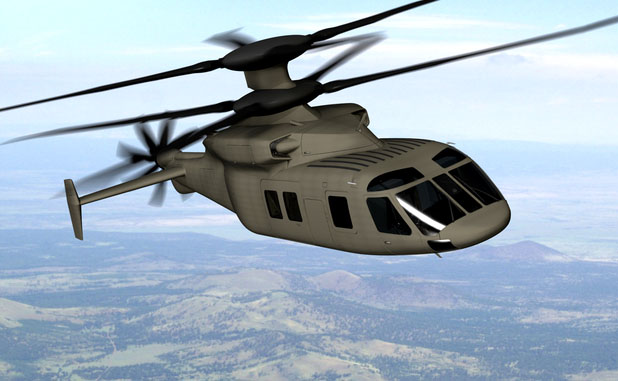
A joint Sikorsky-Boeing team has submitted their initial design for a new high-speed compound helicopter called the SB-1 Defiant to the U.S. Army.
“Last week we submitted our initial design and risk report to the customer,” said Doug Shidler, one of the two co-program directors for the industry team, during a Tuesday teleconference. “Next week we will be conducting our initial design and risk review with them.”
The high-speed compound helicopter design is the team’s entry into the Army’s Joint Multirole (JMR) risk reduction effort for the Future Vertical Lift (FVL) program that is intended to replace the long-serving Sikorsky UH-60 Blackhawk.
Eventually, a derivative of the FVL could replace the U.S. Navy’s MH-60S/R helicopters under the MH-XX program—the service is a partner on the Army led effort.
Thus far, Shidler said that the Sikorsky-Boeing team has completed a preliminary design review for the Defiant aircraft and are about to start working on the detailed design. There will be a final design and risk review next year, Shidler said. If all goes as planned, the Defiant will fly in 2017.
The FVL aircraft could enter service in the 2030s if the Pentagon funds the program to fruition—but given the uncertainly of future budgets, it is not a foregone conclusion.
While the team will not share the specific performance of the SB-1 aircraft, the general design requirements for the FVL call for a cruise speed of 230 knots, a range of 424 kilometers and hovering at 6000ft density altitude during a 95 degree Fahrenheit day.
To achieve those performance targets—especially the speed component, which is beyond the capabilities of any conventional helicopter—the aircraft uses co-axial rigid rotors coupled with a propulsor unit. The Sikorsky X-2 high-speed prototype aircraft pioneered the design concept that is being used on Defiant a few years ago.
There are four competitors in the JMR demonstration effort—the Sikorsky-Boeing, Bell Helicopter, Karem Aircraft and AVX.





